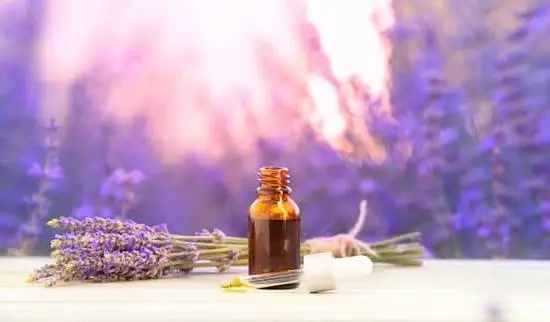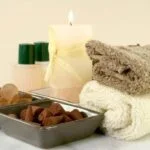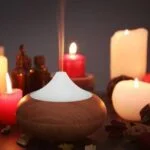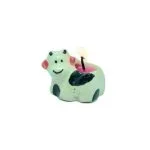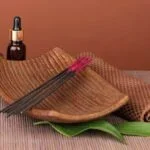Are you curious about how to aromatherapy diffusers work? Aromatherapy has been used for centuries as a natural way to promote health and well-being. By using essential oils extracted from plants, aromatherapy can help alleviate stress, improve sleep, and enhance mood. Aromatherapy diffusers are popular tools that allow the dispersal of these essential oils into the air, creating a pleasant and therapeutic atmosphere.
There are several types of aromatherapy diffusers available in the market, each with its own unique method of dispersing essential oils. From ultrasonic and nebulizing diffusers to heat and evaporative diffusers, understanding how these devices work is crucial in maximizing their benefits. In this article, we will delve into the mechanics behind each type of diffuser and how they effectively disperse essential oils into the air for aromatherapy purposes.
Aromatherapy diffusers not only provide a pleasant aroma but also offer various health benefits such as stress relief, improved sleep, and mood enhancement. The use of diffusers allows for easy access to the therapeutic properties of essential oils, making it a convenient and effective method for incorporating aromatherapy into everyday life. Understanding the different types of diffusers and how they work can help individuals select the most suitable option for their specific needs and preferences.
Types of Aromatherapy Diffusers
Aromatherapy diffusers come in various types, each with its own unique way of dispersing essential oils into the air. Understanding the differences between these types can help you choose the best one for your needs. Here are the different types of aromatherapy diffusers available in the market:
- Ultrasonic Diffusers: These diffusers use ultrasonic vibrations to break down essential oils and water into a fine mist, which is then released into the air as a cool mist. They also act as humidifiers, adding moisture to the air.
- Nebulizing Diffusers: Nebulizing diffusers do not require water or heat to disperse essential oils. Instead, they use an atomizer to create a fine mist of pure essential oil particles, which are then released into the air. This type of diffuser provides a more concentrated aroma and therapeutic benefits.
- Heat Diffusers: Heat diffusers use heat to evaporate the essential oils and release their aroma into the air. This type of diffuser typically uses a candle, electric heat source, or light bulb to gently warm the essential oils without altering their chemical composition.
- Evaporative Diffusers: Evaporative diffusers utilize a fan or natural evaporation to distribute essential oils into the air. The essential oil is placed on a pad or filter, which is then exposed to air flow, causing the oil to gradually evaporate and release its aroma.
Each type of aromatherapy diffuser has its own advantages and limitations, so it’s important to consider your preferences and needs when selecting the right one for you.
Understanding how each type of aromatherapy diffuser works can help you make an informed decision when choosing the best option for your home or workspace. Each type operates differently and offers varying benefits, so it’s important to consider factors such as ease of use, coverage area, noise level, and maintenance requirements when making your selection.
In addition to considering how each type functions, you may also want to think about whether you prefer a constant or intermittent mist, whether you want additional features such as LED lights or timer settings, and whether you have any specific health concerns that could be addressed by using a particular type of aromatherapy diffuser.
By understanding how these different types work and evaluating your individual preferences and needs, you can select the most suitable aromatherapy diffuser for enjoying the therapeutic benefits of essential oils in your environment.
How Aromatherapy Diffusers Work
Aromatherapy diffusers work by dispersing essential oils into the air, allowing the user to experience the therapeutic benefits of the oils through inhalation. Each type of diffuser operates differently to achieve this goal. Below are the different types of aromatherapy diffusers and how they work:
- Ultrasonic Diffusers: These diffusers use ultrasonic vibrations to break down essential oils and water into fine particles, which are then released as a mist into the air. The mist not only disperses the scent of the essential oil but also humidifies the room, providing additional health benefits.
- Nebulizing Diffusers: Nebulizing diffusers work by using pressurized air or gas to disperse pure essential oil into the air as a fine mist. This type of diffuser does not require water or heat, allowing for a more concentrated and potent aroma therapy experience.
- Heat Diffusers: Heat diffusers utilize heat to evaporate essential oils and release their aroma into the air. These diffusers typically use a small fan or heat source to evaporate the oils, but it’s important to note that heat can alter the chemical composition of some essential oils.
- Evaporative Diffusers: Evaporative diffusers work by allowing essential oils to evaporate naturally into the air. This type of diffuser typically uses a fan to blow air through a pad or filter that has been soaked in essential oil, causing evaporation and dispersion throughout the room.
Understanding how each type of aromatherapy diffuser works can help individuals choose the best option for their needs and preferences. Whether one is looking for a subtle scent in their living space or aiming for therapeutic benefits like stress relief or improved sleep quality, there is an ideal aromatherapy diffuser available.
In addition, it’s important to consider factors such as noise level, maintenance, and safety when selecting an aromatherapy diffuser. By learning about these different types of diffusers and how they work, individuals can make an informed decision when incorporating aromatherapy into their wellness routine.
Benefits of Aromatherapy Diffusers
Aromatherapy diffusers offer a wide range of health and wellness benefits, making them a popular choice for individuals looking to improve their overall well-being. From stress relief to improved sleep and mood enhancement, these diffusers have the potential to positively impact one’s mental and physical health.
Stress Relief
Aromatherapy diffusers are known for their stress-relieving properties. By dispersing calming essential oils into the air, diffusers can help create a soothing environment that promotes relaxation and reduces feelings of anxiety. This can be especially beneficial after a long, hectic day or during times of high stress.
Improved Sleep
Many people struggle with getting a good night’s sleep, but aromatherapy diffusers may offer a natural solution. Certain essential oils, such as lavender and chamomile, are known for their sleep-inducing properties. When used in a diffuser before bedtime, these oils can help promote relaxation and create an optimal environment for restful sleep.
Mood Enhancement
Another notable benefit of using aromatherapy diffusers is their ability to enhance one’s mood. Scents like citrus or peppermint have invigorating properties that can help boost energy levels and uplift one’s spirits. On the other hand, floral scents like rose or jasmine are known for their calming and mood-balancing effects.
Selecting the Right Essential Oils
When it comes to selecting the right essential oils for aromatherapy, it’s important to consider specific health concerns or desired mood enhancement. Each essential oil has unique properties and benefits, making it crucial to choose the ones that align with your needs. Here are some tips on how to choose the best essential oils for specific health concerns or mood enhancement.
Understanding Your Needs
Before selecting essential oils for aromatherapy, it’s important to understand your specific needs. Are you looking to relieve stress and anxiety? Do you want to promote better sleep? Or are you seeking an energy boost? By identifying your needs, you can narrow down the essential oils that will best address those concerns.
Researching Essential Oils
Once you’ve identified your needs, it’s time to research different essential oils and their properties. Some popular essential oils for stress relief include lavender, chamomile, and bergamot. For improved focus and clarity, rosemary and peppermint are often recommended. Researching the benefits of each essential oil will help you make informed choices based on your specific goals.
Seeking Professional Advice
If you’re new to aromatherapy or unsure about which essential oils to use, consider seeking advice from a qualified aromatherapist or healthcare professional. They can provide personalized recommendations based on your individual health concerns and goals. Additionally, they can guide you in creating custom blends of essential oils for targeted relief or enhancement.
By following these tips, you can confidently select the right essential oils for your aromatherapy needs. Whether you’re looking to improve sleep quality, reduce stress, or elevate your mood, choosing the best essential oils is a crucial step in maximizing the benefits of aromatherapy diffusers.
Setting Up and Operating Aromatherapy Diffusers
Aromatherapy diffusers are a popular way to enjoy the benefits of essential oils, but it’s important to understand how to use them properly in order to get the best results. Different types of diffusers have their unique methods of operation, and understanding the mechanics behind each type can help maximize the effectiveness of aromatherapy.
Ultrasonic diffusers work by using ultrasonic vibrations to disperse a fine mist of water and essential oil into the air. This type of diffuser is popular because it also functions as a humidifier, adding moisture to the air while dispersing the essential oil aroma. Nebulizing diffusers, on the other hand, break down essential oils into tiny particles without the use of heat or water, allowing for a more concentrated and potent aroma.
Heat diffusers use heat to evaporate the essential oils into the air, while evaporative diffusers rely on a fan or natural airflow to diffuse the aroma. Understanding how each type works can help users select the best option for their needs.
When setting up an aromatherapy diffuser, it’s important to follow the manufacturer’s instructions for optimal performance. This may include adding water and essential oils in specific ratios, ensuring that the device is placed on a stable surface, and positioning it in a well-ventilated area for even distribution of the aroma.
Operating a diffuser typically involves filling its reservoir with water, adding a few drops of essential oil, and turning it on according to the instructions provided with the specific model.
Using aromatherapy diffusers can be an enjoyable and beneficial experience when done properly. With an understanding of how different types of diffusers work and how to set them up and operate them effectively, individuals can take full advantage of their health and wellness benefits.
| Diffuser Type | Mechanics |
|---|---|
| Ultrasonic | Uses ultrasonic vibrations to disperse water and essential oil into mist |
| Nebulizing | Breaks down essential oils into tiny particles without heat or water |
Maintenance and Cleaning
Aromatherapy diffusers are a great way to enjoy the benefits of essential oils, but it’s important to properly maintain and clean them to ensure longevity and optimal performance. Over time, residue from essential oils can build up in the diffuser, affecting its functionality and potentially causing it to clog. Regular cleaning can also prevent the growth of mold and bacteria, which can be harmful when released into the air.
One of the most important steps in maintaining an aromatherapy diffuser is to regularly clean it according to the manufacturer’s instructions. Most diffusers can be easily cleaned with water and mild soap, while some may require special cleaning solutions. It’s crucial to follow these instructions closely to avoid damaging the diffuser or voiding its warranty.
Another important aspect of maintenance is changing out any filters or wicks that may be present in the diffuser. Over time, these components can become saturated with essential oil residue, affecting their ability to properly diffuse oils into the air. By replacing these parts as recommended by the manufacturer, you can ensure that your diffuser continues to work effectively.
Lastly, it’s essential to store your aromatherapy diffuser properly when not in use. Make sure to empty any leftover water and thoroughly dry the unit before putting it away. Storing a damp or wet diffuser can lead to mold growth and damage over time.
| Maintenance Tips | Cleaning Tips |
|---|---|
| Regularly clean with water and mild soap | Follow manufacturer’s instructions for cleaning |
| Change filters/wicks as recommended | Use special cleaning solutions if required |
| Properly store when not in use | Thoroughly dry unit before storage |
Safety Precautions
Aromatherapy diffusers are a popular and convenient way to enjoy the therapeutic benefits of essential oils. However, it is essential to use them safely to avoid potential hazards. Proper dilution of essential oils is crucial to ensure that they are used safely and effectively in a diffuser.
When using an aromatherapy diffuser, it is important to dilute essential oils with a carrier oil or water before adding them to the diffuser. Pure essential oils are highly concentrated and can be too strong if used directly in a diffuser, which can lead to skin irritation, respiratory issues, or other adverse reactions. Diluting essential oils not only makes them safer for use in a diffuser but also helps extend the lifespan of the oil and enhances its efficacy.
In addition to proper dilution, it is also important to be aware of potential hazards associated with using aromatherapy diffusers. For example, some essential oils may be harmful to pets, so it is crucial to keep diffusers out of reach of animals or avoid using certain oils altogether.
Furthermore, certain essential oils may cause allergic reactions or interact with medications, so individuals should be mindful of their own sensitivities and consult with a healthcare professional if necessary before using specific essential oils in their diffusers.
Overall, being mindful of safety precautions when using aromatherapy diffusers can help individuals enjoy the health and wellness benefits of essential oils without any adverse effects. Taking the time to properly dilute essential oils and being aware of potential hazards will allow individuals to fully experience the therapeutic effects of aromatherapy while prioritizing their well-being.
Conclusion
In conclusion, understanding how aromatherapy diffusers work is essential for anyone interested in harnessing the benefits of essential oils for their health and wellness. From ultrasonic to nebulizing diffusers, each type has its own unique way of dispersing essential oils into the air, creating a soothing and therapeutic atmosphere. Whether it’s for stress relief, improved sleep, or mood enhancement, aromatherapy diffusers offer a natural and effective way to experience the healing properties of essential oils.
Selecting the right essential oils is crucial for maximizing the benefits of aromatherapy diffusers. With a wide variety of options available, it’s important to choose oils that suit specific health concerns or desired mood enhancement.
Additionally, setting up and operating diffusers properly ensures optimal results, while regular maintenance and cleaning are necessary for longevity and performance. It’s also vital to adhere to safety precautions when using aromatherapy diffusers, such as diluting essential oils properly and being mindful of potential hazards.
As evidenced by the comprehensive information in this blog, aromatherapy diffusers are an accessible and beneficial tool for achieving overall well-being. By bringing the therapeutic effects of essential oils into your home or workspace through these devices, you can experience a natural and holistic approach to health and wellness. We encourage readers to explore the world of aromatherapy diffusers and discover the positive impact they can have on their lives.
Frequently Asked Questions
Does Diffusing Essential Oils Actually Work?
Diffusing essential oils can work by releasing the aromatic compounds into the air, which can have various therapeutic effects on the body and mind. However, scientific evidence on its effectiveness is still limited.
Is Diffusing Essential Oils Safe for Your Lungs?
Diffusing essential oils can be safe for your lungs when used properly and in moderation. It’s important to dilute oils, use high-quality products, and avoid prolonged exposure to strong concentrations to prevent any potential respiratory issues.
What Is the Working Principle of a Diffuser?
The working principle of a diffuser involves breaking down the essential oils into small particles and dispersing them into the air as a fine mist or vapor. This allows the oils to be easily inhaled and absorbed by the body for their potential health benefits.

Are you looking for a natural way to improve your health and wellbeing?
If so, aromatherapy may be the answer for you.

